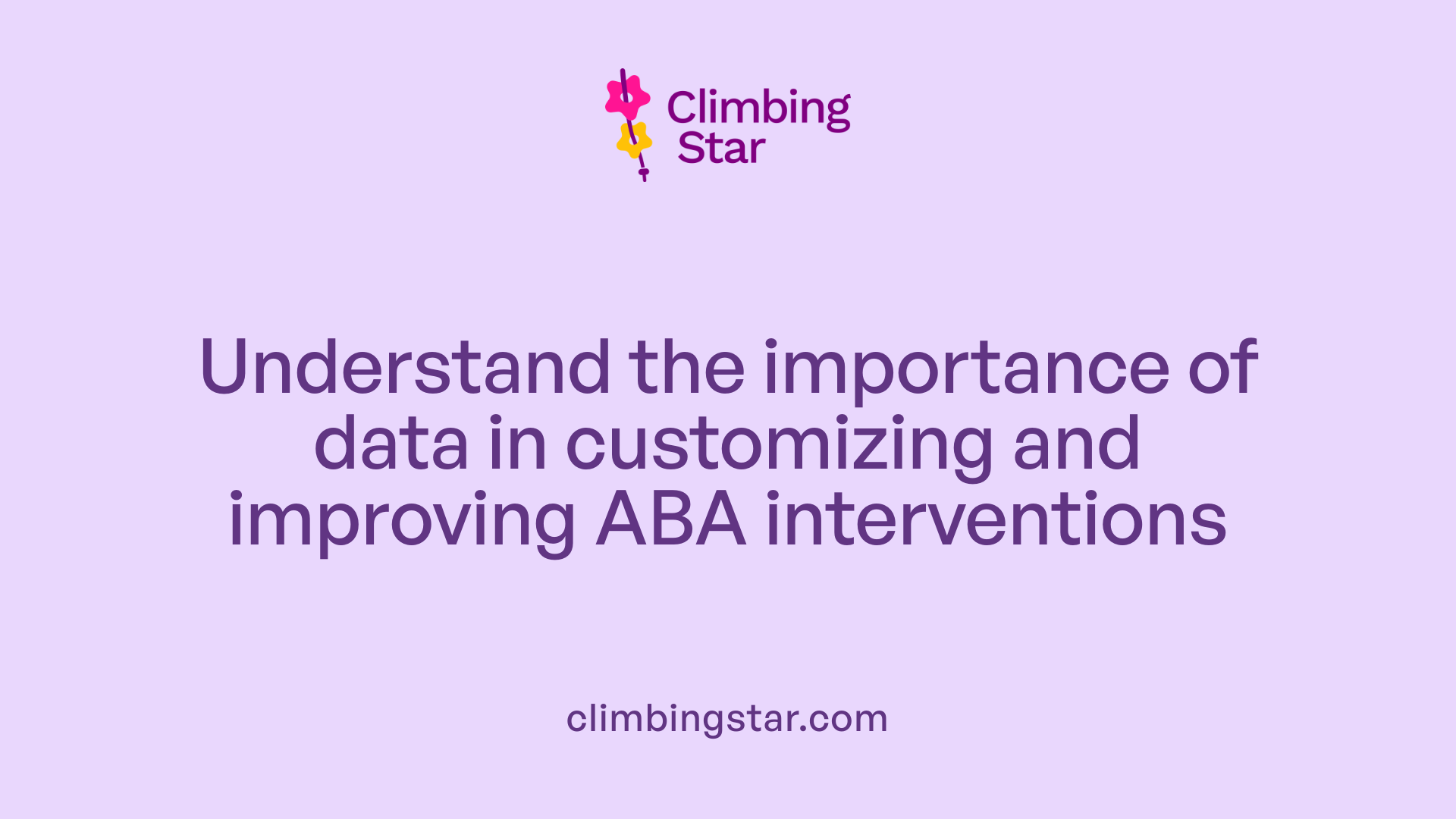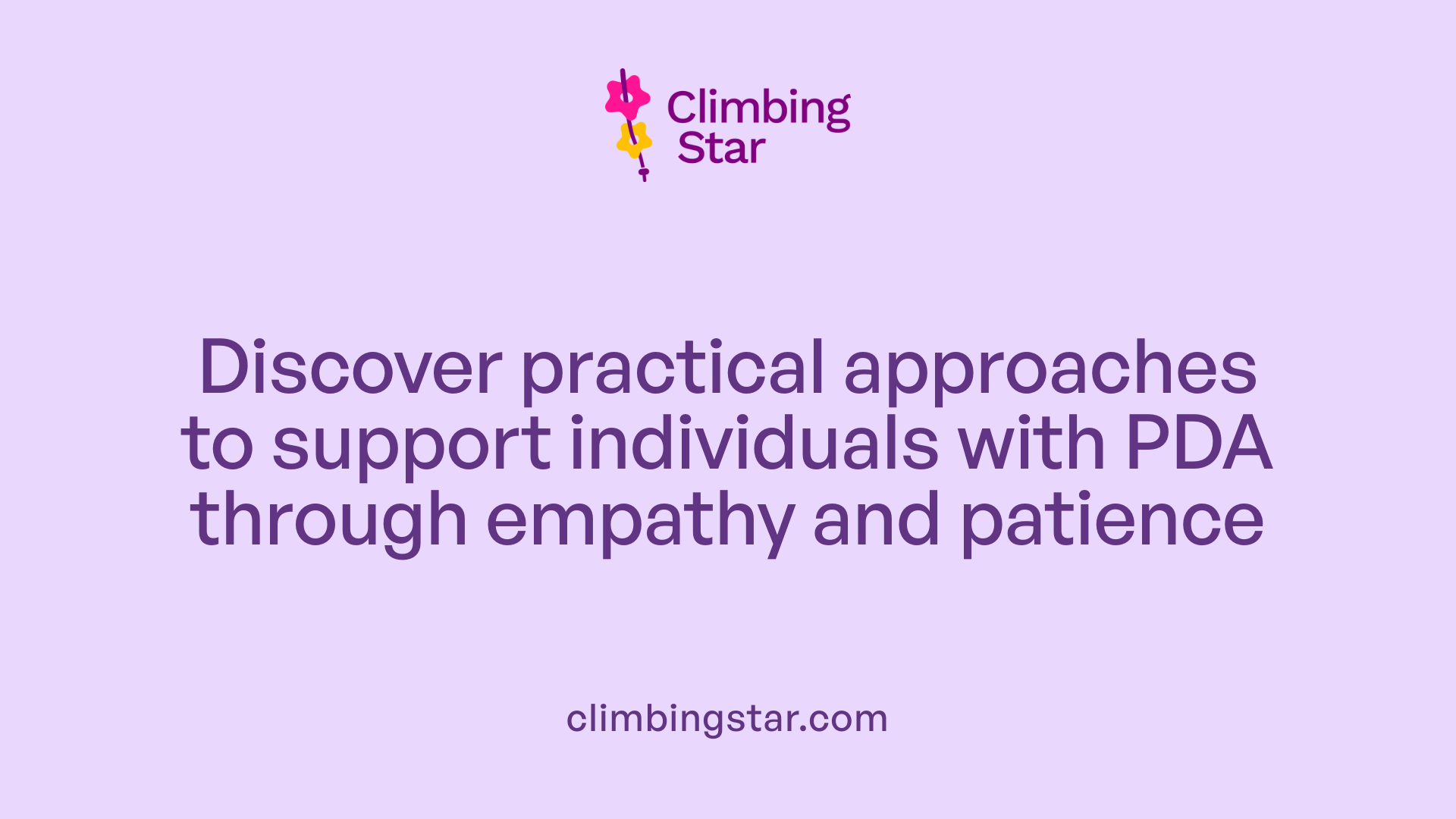Introducing Choice Theory and Behavioral Science
Choice Theory is a psychological framework that explores how individuals make decisions to satisfy their basic needs, influencing their behavior in various contexts, including therapy and behavioral analysis. To fully grasp Choice Theory, it's essential to understand its relationship with behavioral sciences such as Applied Behavior Analysis (ABA), which provide practical methods for analyzing and changing behavior. This article examines the science behind Choice Theory, its applications, and its role in supporting individuals, particularly those on the autism spectrum, including profiles like Pathological Demand Avoidance (PDA).
Defining Choice Theory in the Context of Behavioral Science
What Is Choice Theory?
Choice Theory is a psychological framework that explains human behavior as choices made to fulfill basic needs. Unlike traditional views that focus on external control, Choice Theory emphasizes internal motivation and personal responsibility.
How Does Decision-Making Work in Choice Theory?
According to Choice Theory, all behaviors are attempts to satisfy five basic human needs: survival, love and belonging, power, freedom, and fun. Individuals make decisions based on which choices best help them meet these needs within their environment.
How Does Choice Theory Relate to Human Needs Satisfaction?
Choice Theory asserts that behavior is purposeful and driven by an innate desire to satisfy fundamental needs. For example, the need for love and belonging motivates social interactions, while the need for power relates to control and achievement. Understanding these needs helps explain why people act the way they do and provides a framework for encouraging positive behavioral changes.
Applied Behavior Analysis: The Science Behind Behavior Change
What is Applied Behavior Analysis (ABA)?
Applied Behavior Analysis, or ABA, is the practical application of behavior analysis science aimed at solving real-world issues. Its main goal is to bring about lasting and positive changes in behaviors that matter socially.
How Does ABA Focus on Real-World Behavior?
ABA isn't just a teaching method; it is a science dedicated to understanding and modifying behavior by carefully arranging environmental factors. This approach ensures interventions are grounded in observable and measurable changes rather than theoretical concepts.
What Is the Science of Behavior Analysis?
Behavior analysis investigates how behavior is influenced by the environment. ABA translates these scientific principles into tactics that promote learning and reduce problematic behaviors through strategic interventions. These interventions revolve around reinforcement—individualized and meaningful to each person—to encourage desired behaviors effectively.
By centering on socially important behaviors and using data-driven methods, ABA ensures that progress is objectively monitored. This scientific rigor distinguishes ABA as a robust and reliable approach to effecting behavior change across various settings beyond autism, such as addiction treatment and gerontology.
Broader Applications of ABA Beyond Autism

In what fields beyond autism is ABA beneficial?
Applied Behavior Analysis (ABA) extends far beyond its well-known role in autism therapy. Its principles have been successfully applied in a variety of fields, demonstrating the wide-reaching impact of behavior analysis.
ABA Uses in Addiction
ABA techniques help individuals struggling with addiction by identifying triggers and reinforcing healthier behaviors. Through structured environmental changes and consistent reinforcement, ABA supports long-term recovery and relapse prevention.
ABA and Gambling
In cases of gambling addiction, ABA interventions target the urges and routines that sustain problematic behavior. By applying behavior modification strategies, therapists help reduce gambling frequency and promote alternative, positive activities.
Applications in Eating Disorders, Forensic Analysis, and Gerontology
ABA is also utilized to address eating disorders, assisting individuals in developing healthier eating habits and coping strategies through positive reinforcement. In forensic settings, ABA supports behavior change to reduce recidivism and improve compliance with legal mandates. Moreover, gerontology benefits from ABA by enhancing daily living skills and promoting independence among older adults.
These examples highlight ABA’s flexibility as a science dedicated to improving socially significant behaviors across diverse populations and challenges. Its data-driven, individualized approach makes it a powerful tool in many arenas beyond autism spectrum disorders.
Understanding Behavior Through Environmental Arrangements in ABA

How does ABA approach behavior change?
Applied Behavior Analysis (ABA) approaches behavior change by focusing on the environment and how it influences behavior. Rather than being solely a teaching method, ABA is a science dedicated to understanding the relationship between environmental factors and behavior outcomes.
Environmental influences on behavior
Behavior does not occur in isolation but is shaped by various environmental arrangements. ABA professionals carefully analyze these environmental components to determine how they contribute to both desirable and problematic behaviors. Adjusting these factors helps promote positive behavior change.
Behavior change mechanisms
Central to ABA is the principle of reinforcement, wherein behaviors that are rewarded tend to increase over time. ABA programs utilize individualized, meaningful reinforcements, regularly reassessing preferences to ensure motivation remains high. This scientific approach enables lasting, socially important behavior changes, rather than rote teaching.
Through its emphasis on environmental influences and data-driven strategies, ABA offers a nuanced method to effect change by modifying antecedents and consequences in real-world contexts.
Individualized ABA Programs Crafted by Certified Professionals

Who creates effective ABA programs and what do they target?
Applied Behavior Analysis (ABA) programs are most effective when personalized to meet the unique needs of each individual. These programs are designed and overseen by qualified professionals, specifically Board Certified Behavior Analysts (BCBAs), who have undergone rigorous training and certification.
BCBAs use their expertise to assess individual behavior profiles and then craft targeted interventions. These interventions focus on enhancing critical areas such as social interaction, communication skills, play behavior, and pre-academic abilities. This targeted approach ensures the program is relevant and meaningful to the person's everyday life.
By tailoring ABA programs, BCBAs address the specific challenges faced by each individual, fostering positive, lasting behavioral changes. The individualized nature of these programs supports efficient learning and growth, improving overall quality of life.
This professional guidance ensures that interventions are based on well-established behavioral principles and informed by ongoing data analysis to track and promote progress across the targeted skill areas.
Family Involvement: Partners in ABA Therapy
What role do family members play in ABA?
Family members are essential partners in Applied Behavior Analysis (ABA) therapy. Their active involvement significantly enhances the effectiveness of interventions targeting social, communication, play, and pre-academic skills. Rather than being passive observers, families are coached by professionals—such as Board Certified Behavior Analysts (BCBAs)—to understand and implement ABA strategies effectively within daily routines.
Coaching strategies
Qualified ABA professionals provide tailored coaching to family members, helping them learn how to consistently apply reinforcement techniques and behavioral strategies. This coaching is designed to empower families, enabling them to recognize opportunities for intervention throughout the day and adapt strategies to fit unique home environments. Practicing these approaches in real-world settings ensures that gains made in therapy generalize beyond clinical sessions.
Practicing throughout the day
Incorporating ABA strategies consistently across various situations and times enhances learning and behavior change. Families are encouraged to practice targeted behaviors during everyday activities, from mealtime to playtime, reinforcing progress and reducing problem behaviors through meaningful, individualized reinforcement. This continuous practice fosters stronger, more lasting changes compared to occasional or isolated intervention moments.
Data-Driven Decision Making in ABA Programs

How is progress measured in ABA?
Applied Behavior Analysis relies heavily on data-driven decision making to monitor and assess the effectiveness of interventions. Progress in ABA programs is measured through continuous collection of objective data reflecting the individual's behavior and skill acquisition.
Monitoring Progress
Data is gathered systematically during ABA sessions and throughout daily activities, recording the frequency, duration, or intensity of specific behaviors. This approach ensures therapists and caregivers can track whether targeted behaviors are increasing, decreasing, or remaining consistent.
Objective Measurement
The emphasis on objective measurement means that decisions about treatment are based on quantifiable evidence rather than subjective impressions. This allows for clear evaluation of whether a particular intervention is successful in promoting desired social, communication, or adaptive skills.
Adjusting Goals Based on Evidence
Regular data review enables qualified professionals, such as Board Certified Behavior Analysts (BCBAs), to adjust goals or teaching strategies. If the data indicates little or no progress, modifications can be implemented promptly to better tailor the program to the individual's needs.
This cyclical process of data collection, analysis, and program adjustment forms the foundation of effective ABA practice, ensuring interventions remain responsive and effective in driving meaningful behavioral change.
Reinforcement Strategies in ABA for Promoting Learning
What is the primary strategy to promote learning in ABA?
Individualized and meaningful reinforcement is the foundational approach in Applied Behavior Analysis (ABA) used to encourage learning and manage challenging behaviors. Rather than a one-size-fits-all method, reinforcement is tailored to the unique preferences and motivations of each individual. This personalization helps make rewards genuinely motivating, enhancing the effectiveness of behavior change techniques.
Individualized Reinforcement
Reinforcement in ABA is not arbitrarily assigned but carefully selected to align with what is meaningful to the learner. By identifying what the individual finds rewarding—whether it's praise, tokens, activities, or tangible items—therapists and caregivers can boost engagement and willingness to participate in learning activities.
Meaningful Rewards
Rewards that resonate personally with the individual have a stronger impact. This meaningfulness promotes positive associations with desired behaviors, encouraging their repetition. Such rewards might vary widely between individuals; for some, social recognition is highly motivating, while for others, specific play items or preferred snacks may serve as potent incentives.
Reducing Problematic Behaviors
Reinforcement strategies also play a crucial role in decreasing unwanted or challenging behaviors. By reinforcing alternative, acceptable behaviors and withholding reinforcement from negative behaviors, ABA helps shift behavior patterns toward more adaptive and socially appropriate actions.
Preference Reassessment
Preferences are not static. ABA programs include ongoing assessments of what reinforcers remain effective for the individual. Regularly reassessing and updating reinforcement options prevents satiation and maintains motivation, ensuring that interventions continue to produce lasting, positive outcomes.
Certification and Ethics in ABA Professionals
Who provides quality ABA services and what standards do they follow?
Quality Applied Behavior Analysis (ABA) services are delivered by professionals certified through the Behavior Analyst Certification Board (BACB). This includes Board Certified Behavior Analysts (BCBAs), Board Certified assistant Behavior Analysts (BCaBAs), and Registered Behavior Technicians (RBTs).
Each certification level represents different scopes of practice and training. BCBAs typically design and oversee individualized ABA programs, BCaBAs provide support under BCBAs’ supervision, and RBTs implement interventions directly with clients.
All these professionals are expected to adhere strictly to the BACB's Code of Ethics. This code sets high standards for professional conduct, ensuring that services are delivered responsibly, safely, and with respect for client dignity.
Adhering to these ethical guidelines guarantees that ABA interventions are both effective and respectful, fostering trust between providers, individuals receiving services, and their families. It also ensures accountability and promotes continuous professional development within the ABA field.
Introducing Pathological Demand Avoidance (PDA) Within Autism Spectrum
What is Pathological Demand Avoidance (PDA)?
PDA is recognized as a profile within the autism spectrum, notable for an intense avoidance of everyday demands and an overwhelming need to control situations. Individuals with PDA often display wide emotional variability, making their behavior unpredictable and challenging to manage.
Behavioral Profile Features
Core characteristics of PDA include extreme resistance to demands, frequent mood swings, and the use of social strategies to avoid obligations. These social tactics might involve superficial social skills that mask their true feelings or manipulative behaviors like making excuses or diverting attention. Additionally, people with PDA may show obsessive behaviors focused on others or the demands placed upon them while finding comfort in role-playing or pretend scenarios.
Recognition Status
While PDA has gained attention since its introduction by Elizabeth Newson in 1983, it is currently not recognized as a separate diagnosis in major diagnostic manuals such as the ICD or DSM. Instead, it is considered a profile within the broader diagnosis of autism spectrum disorder, highlighting a distinct pattern of demand avoidance rather than a standalone condition.
Origins and Early Identification of PDA
Who introduced the term PDA and what behaviors does it describe?
The term Pathological Demand Avoidance (PDA) was introduced by Elizabeth Newson in 1983. She used this term to describe a specific set of behaviors seen in children characterized mainly by an intense resistance to ordinary demands. This resistance often manifests as a strong need to control situations and people, which is thought to be closely linked to the child's desire for autonomy.
Newson observed that children with PDA exhibit behaviors that go beyond typical demand avoidance. These children might use social strategies like distraction or making excuses to evade demands, which distinguishes PDA from other profiles within the autism spectrum. Her work highlighted how these behaviors are driven by anxiety and intolerance of uncertainty, making the need for control a central feature.
Identifying these behaviors early is crucial because it allows for tailored support to help manage the unique challenges faced by individuals with PDA. Understanding the origins and characteristics of PDA offers a foundation for developing effective interventions and fostering empathy and patience in caregivers and professionals.
Core Characteristics and Social Strategies of Individuals with PDA
What are the core characteristics of PDA?
Pathological Demand Avoidance (PDA) is distinguished by several defining traits. Individuals with PDA strongly resist everyday demands and requests, often exhibiting extreme mood variability that can include sudden shifts in emotional state. They tend to use social strategies aimed specifically at avoiding demands, which can complicate social interactions. Their social skills may appear superficial or surface-level, masking deeper difficulties. Obsessive behaviors are common and are usually directed towards people, demands themselves, or specific topics. Many individuals with PDA also find comfort and security in engaging in role play or pretend scenarios, which can serve as a coping mechanism.
How do individuals with PDA avoid demands socially?
To evade demands, individuals with PDA frequently employ sophisticated social tactics. These include making excuses, distracting others, or diverting conversations away from the demand. Such behaviors can sometimes be perceived as manipulative, but they stem from an intense need for control and anxiety about complying with requests. Understanding these avoidance strategies is crucial to providing effective support.
Additional aspects of PDA behavior
The demand avoidance shown is often linked to a drive for autonomy and may be exacerbated by anxiety or an intolerance of uncertainty. These factors contribute to the complexity of managing PDA behaviors and underscore the need for tailored, empathetic approaches that prioritize trust and calm interactions.
This combination of resistance, emotional shifts, avoidance tactics, obsessions, and role play illustrates the multifaceted behavioral profile of PDA, highlighting the importance of nuanced understanding and supportive strategies.
Understanding Demand Avoidance in PDA: Control and Anxiety Factors
What Explains Demand Avoidance in PDA?
Demand Avoidance in Pathological Demand Avoidance (PDA) is fundamentally linked to an intense desire for control. Individuals with PDA often resist demands because complying may feel like a loss of autonomy, which can provoke discomfort or distress.
Desire for Control
Control is a central theme in PDA behavior. People with this profile engage in avoidance tactics to maintain a sense of independence and manage their environment according to their preferences. This need for control can manifest as refusal, negotiation, or social manipulation to shift or eliminate demands.
Role of Anxiety
Anxiety also plays a significant role in demand avoidance. The anticipation of demands can trigger stress or worry, making it challenging for individuals to engage cooperatively. This anxiety tends to increase avoidance behaviors as a coping mechanism to reduce internal unease.
Intolerance of Uncertainty
Closely related to anxiety is an intolerance of uncertainty. When faced with unpredictable situations or unclear expectations, individuals with PDA may react by avoiding demands to minimize the discomfort caused by uncertainty.
Together, these factors—control needs, anxiety, and intolerance of uncertainty—interact to explain the characteristic demand avoidance seen in PDA, highlighting the importance of understanding these underlying causes when supporting affected individuals.
Supporting Individuals with PDA: Strategies for Caregivers and Professionals

What are Effective Ways to Support Individuals with PDA?
Supporting individuals with Pathological Demand Avoidance (PDA) requires thoughtful approaches aimed at reducing anxiety and avoiding unnecessary conflicts.
Building Trust
Establishing trust is essential for individuals with PDA, who often feel overwhelmed by demands. Caregivers and professionals should create a safe, predictable environment where individuals feel understood and valued.
Avoiding Demand Words
PDA individuals tend to resist direct requests or demands. Using gentle language or rephrasing requests to avoid typical "demand" words can help reduce resistance and make cooperation more likely.
Remaining Calm
Maintaining a calm and patient demeanor when interacting with someone exhibiting PDA behaviors helps prevent escalation. Emotional variability is common, so keeping calm can soothe heightened emotions.
Depersonalizing Requests
Requests should be framed in a way that separates the demand from the person's identity, minimizing feelings of personal pressure or confrontation.
Indirect Praise
Offering praise indirectly rather than openly may be more effective. For example, complimenting a group effort or commenting casually can be less challenging for someone sensitive to demand avoidance.
Consistency and Flexibility
Combining consistent routines with flexible expectations supports the individual's need for structure while accommodating their unique challenges. Allowing choices or alternatives gives a sense of control while maintaining necessary boundaries.
Employing these strategies nurtures cooperation, eases anxiety, and promotes positive interactions. They require empathy, patience, and ongoing adjustment to meet each individual's needs effectively.
Debates and Research Challenges Surrounding PDA
What controversies surround PDA?
Pathological Demand Avoidance (PDA) remains a topic of considerable debate within the scientific and clinical communities. One major controversy is whether PDA should be recognized as a distinct condition separate from autism spectrum disorder (ASD). Currently, PDA is not officially listed in the Diagnostic and Statistical Manual of Mental Disorders (DSM) or the International Classification of Diseases (ICD) as a standalone diagnosis, but rather as a profile within the broader autism spectrum.
Ongoing scientific debate
Critics argue that PDA's characteristics overlap significantly with traits seen in other autism profiles, making its distinct status questionable. They point to the lack of extensive, rigorous research backing PDA as an independent diagnosis. This debate has fueled calls for more robust empirical studies to clarify PDA's features, prevalence, and underlying mechanisms.
Limited high-quality research
Research on PDA remains sparse, with few high-quality, large-scale studies available. This scarcity hinders the development of standardized diagnostic criteria and evidence-based interventions. Researchers emphasize the need for methodologically sound investigations to better understand PDA’s nature and how demand avoidance manifests behaviorally and neurologically.
Importance of understanding demand avoidance
Despite these challenges, both proponents and critics agree on the clinical importance of recognizing and addressing demand avoidance behaviors. Understanding these behaviors is vital because they significantly impact affected individuals’ social interaction, emotional regulation, and daily functioning. Tailored support and empathetic approaches focusing on reducing the stress associated with demands can lead to more positive outcomes.
In summary, while PDA's classification remains debated, advancing research and awareness about demand avoidance behaviors is essential for improving support strategies and ensuring that individuals exhibiting these traits receive appropriate care.
The Importance of Early Identification and Tailored Support in Autism Profiles
Why is early identification important for profiles like PDA?
Early identification of autism profiles, such as Pathological Demand Avoidance (PDA), is vital because it allows for timely and appropriate support, leading to more positive long-term outcomes. Recognizing PDA behaviors—like intense demand avoidance and a need for control—early on equips caregivers and professionals to respond effectively.
Early detection benefits
Detecting PDA early can help prevent escalating difficulties by addressing challenges before they become deeply ingrained. This early recognition aids in reducing frustration, anxiety, and social isolation by adapting environments to meet the individual's unique needs.
Customizing interventions
Tailored support crafted by trained professionals is essential. Interventions for PDA often emphasize building trust, avoiding direct demands, and promoting autonomy. These strategies require understanding each individual's distinct patterns, leading to more effective behavior management and development.
Long-term positive outcomes
When interventions target the specific characteristics of PDA, such as demand avoidance and emotional variability, individuals benefit from enhanced social skills, communication, and adaptive behaviors. This personalized approach improves quality of life and fosters independence.
Profiles like PDA
Although PDA is not formally recognized in diagnostic manuals as a separate condition, it is increasingly acknowledged as a profile within the autism spectrum. Its distinctive features highlight the need for specialized identification and support frameworks, reinforcing the importance of early and customized intervention.
Empathy and Patience: Foundations for Working with PDA
Why Are Empathy and Patience Vital When Supporting Individuals with PDA?
Empathy and patience form the emotional backbone for effectively supporting individuals with Pathological Demand Avoidance (PDA). These attitudes enable caregivers and professionals to connect meaningfully with those who resist demands due to anxiety or a strong need for control. Without empathy, responses may appear harsh or dismissive, increasing the individual's stress and avoidance behaviors.
Patience facilitates the use of calm, consistent approaches essential for de-escalating intense mood swings and building trust. It allows for acceptance of gradual progress without forcing compliance, which aligns with the core needs of someone exhibiting PDA traits.
Understanding Behaviors Through an Empathetic Lens
Individuals with PDA often engage in social strategies to avoid demands, such as making excuses or diverting conversations. Recognizing these behaviors as manifestations of anxiety rather than mere defiance calls for an understanding and compassionate attitude. This perspective encourages caregivers to depersonalize requests, avoid direct demand language, and use indirect praise, fostering a supportive environment.
Creating Environments That Support Success
The combination of empathy and patience supports the development of flexible, predictable settings where individuals with PDA feel safe and empowered. Consistency balanced with flexibility helps manage anxiety and demand avoidance, making participation in daily activities more achievable.
By prioritizing these attitudes, families and professionals can nurture trust and cooperation, ultimately promoting positive behavioral change and emotional well-being in those who exhibit PDA behaviors.
Integrating Behavioral Science and Choice Theory for Effective Support
Choice Theory offers a framework for understanding how individuals make decisions to fulfill their basic needs, while Applied Behavior Analysis provides practical tools grounded in scientific principles to observe, measure, and influence behavior. Together, they form a comprehensive approach to supporting diverse populations, including individuals on the autism spectrum and those exhibiting profiles like PDA. Recognizing the importance of individualized programs, data-driven methods, family involvement, and empathy fosters an environment conducive to meaningful, lasting behavioral change. Ongoing research and thoughtful dialogue remain essential as the fields evolve to better serve unique behavioral profiles. Ultimately, embracing these insights equips caregivers and professionals to empower individuals in making choices that enhance their quality of life.







